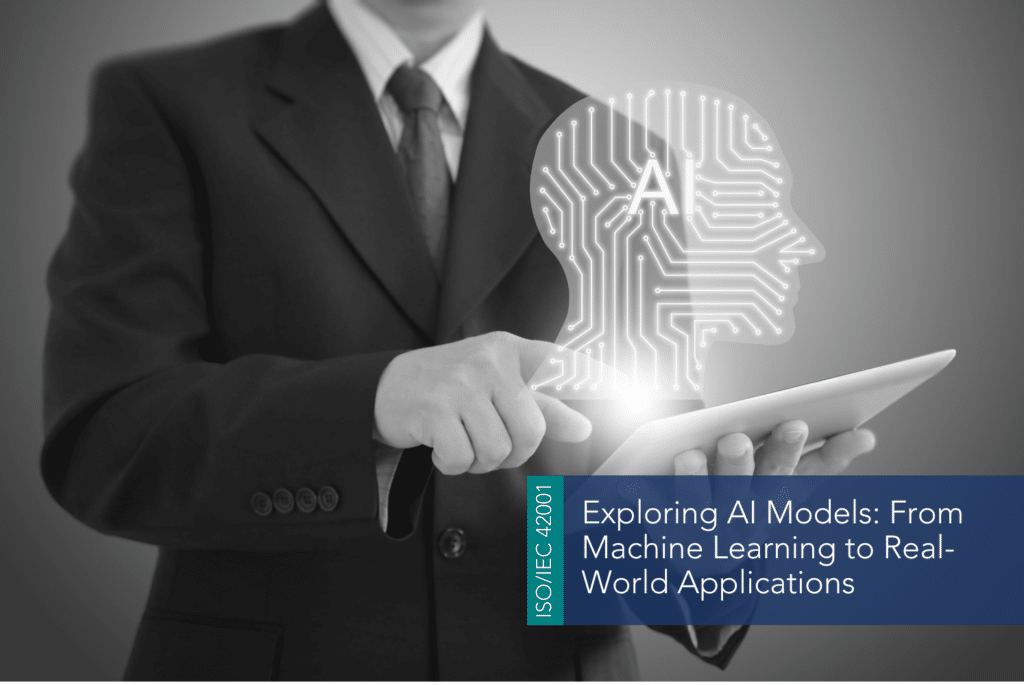
Exploring AI Models: From Machine Learning to Real-World Applications
September 18th, 2024 ByArtificial Intelligence (AI) is transforming industries by boosting innovation and efficiency. However, not all AI models are the same—each has strengths and is suited for different tasks. This article will look at various AI models, from basic machine learning to advanced deep learning, and discuss their specific uses. We’ll also show how businesses can use these technologies to solve problems, improve operations, and discover new opportunities. Whether interested in tech or leading a business, knowing about these models is essential in today’s fast-changing AI world.
What are AI Models?
An AI model is a computational framework designed to perform specific tasks by learning from data. In artificial intelligence (AI) and machine learning (ML), an AI model is trained on a dataset to identify patterns, make predictions, or take actions autonomously without explicit programming for the task. The model’s performance is refined through algorithms and techniques to achieve the desired results.
Below, we will discuss the various AI models, their common algorithms, and their uses in real-world industries.
Machine learning Models
Machine Learning AI Models are designed to learn from data and will improve at specific tasks over time. They use various techniques like reinforcement learning, regression, clustering, and classification.
Common algorithms include Linear and Logistic Regression, Decision Trees, Random Forests, and Support Vector Machines.
These models are often used in predictive analytics, such as predicting market trends from past data or identifying when a customer might leave a service. For example, in real estate, linear regression is used to predict home prices based on different factors, helping buyers and sellers make informed decisions.
Deep Learning Models
Deep Learning AI Models are advanced machine learning techniques that use multi-layered neural networks. They excel at processing large amounts of unstructured data and are commonly used for tasks like image recognition, natural language processing, and audio recognition.
Common algorithms include Convolutional Neural Networks (CNNs), Recurrent Neural Networks (RNNs), and Long Short-Term Memory (LSTM) networks.
These models are ideal for big data and complex pattern recognition. For example, LSTMs can understand human speech, and CNNs are used in security systems to identify individuals. In healthcare, CNNs help analyse medical images to diagnose diseases and suggest treatments.
Generative AI Models
Generative AI Models create new data that mimics the training data, making them essential for fields that need new content.
Common algorithms include Generative Adversarial Networks (GANs) and Variational Autoencoders (VAEs).
These models are used to boost or create new data from existing data, generate synthetic data, and produce creative content. They are also used in video game development to create realistic environments, in fashion to design new clothing based on trends, and in film to enhance the resolution on old movies or generate realistic special effects.
Hybrid AI Models
Hybrid AI Models combine different AI techniques to maximise their strengths and minimise weaknesses. These models are particularly useful in complex situations where one type of model isn’t enough.
Common approaches include Integrated Neural Networks and Ensemble Methods.
These models are applied in areas requiring high accuracy and robustness, such as combining computer vision with NLP for voice-controlled navigation or using multiple classifiers to detect fraudulent transactions more accurately. They’re also used in smart home systems to efficiently automate tasks by processing environmental data.
Natural Language Processing (NLP) AI models
NLP AI Models are designed to understand and process human language.
Common algorithms include BERT (Bidirectional Encoder Representations from Transformers) and GPT (Generative Pre-Trained Transformer).
These models are used in tasks like powering chatbots, analysing sentiment, generating content (such as articles, poetry, or code), and reviewing customer feedback. For example, companies use these models in customer support to create chatbots that provide quick responses to customer questions on their websites.
Computer Vision AI Models
Computer Vision AI Models are designed to interpret and understand visual information.
Common algorithms include CNNs and Capsule Networks.
These models are used in various areas like surveillance, quality control, and interactive gaming. For example, they can detect defects in manufacturing, enhance AI interactions in video games, and analyse customer behaviour in stores. They also help optimise store layouts and enable checkout without traditional cashiers.
Despite their differences, all AI models rely on data to learn patterns and make predictions or decisions. The choice of model depends on the problem at hand, but they all aim to enhance efficiency and solve complex challenges. In conclusion, while the specifics of each AI model vary, their underlying goal of extracting insights from data remains consistent across applications.
When using any sort of AI model in your company for different tasks, you want to make sure you’ve got great quality, security and reliability with AI. This is where ISO/IEC 42001 comes in, ensuring improved quality, traceability, reliability, transparency, and security, with enhanced efficiency and AI risk assessments. Contact us today to start your ISO/IEC 42001 journey.
Contact Us
For a free quotation or remote presentation by an ISO specialist, contact us today.
IMSM Ltd
(Head Office)
20 Grosvenor Place
London
SW1X 7HN